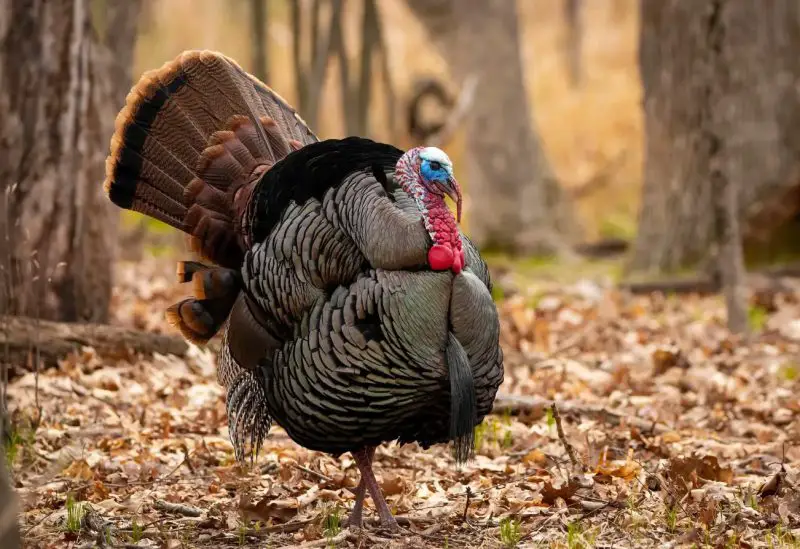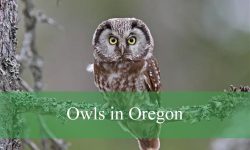Every spring in Missouri, a fascinating drama unfolds deep within the forests and open fields. Wild turkeys begin their annual mating season, transforming the landscape into a stage of calls, displays, and secret rituals that most people never see. While many know turkeys for their connection to Thanksgiving, few truly understand how complex and intense their breeding behavior can be.
The turkey mating season is a remarkable time to observe nature’s strategy for survival and attraction. From the thunderous gobbles of dominant males to the quiet nesting behavior of hens, every action has purpose and meaning. Missouri’s rich mix of habitats—oak forests, river valleys, and farmlands—creates an ideal backdrop for this natural event.
This article dives into the untold aspects of turkey mating season in Missouri. You will learn about their behaviors, timing, courtship displays, and even how environmental factors shape their breeding success. By the end, you will see wild turkeys in a completely new light.
When Does Turkey Mating Season Begin in Missouri

In Missouri, the turkey mating season usually starts in early spring, typically around late March and extends through May. The exact timing can vary slightly depending on the weather. Warmer temperatures and longer daylight hours signal to male turkeys, known as toms, that it is time to begin their courtship rituals.
Before the season begins in full swing, males form small bachelor groups. These groups break apart as the mating period approaches, and toms start to establish dominance. Missouri’s changing temperatures and the availability of food sources such as acorns and insects influence how early these behaviors start. When days become noticeably longer, hormones in both toms and hens trigger the mating instinct.
Hunters and wildlife watchers often mark early April as the peak of breeding activity. This is when toms are most vocal, and gobbling can be heard echoing across the hills at dawn. It’s an unmistakable sound that marks the true arrival of spring in Missouri’s wild spaces.
The Behavior of Male Turkeys During Breeding Season
Male turkeys put on one of the most spectacular shows in the animal kingdom during the mating season. Their displays are not just random movements—they are carefully designed to impress females and intimidate rival males.
A dominant tom will fan out his tail feathers, puff up his chest, and strut slowly while making deep, rhythmic sounds. This display is called “strutting,” and it highlights his size and health. The bright red wattle and blue head become even more vivid during this time, reflecting blood flow and excitement. These color changes are key visual signals to females that he is fit and ready to breed.
Gobbling is another critical behavior. A loud gobble can carry for miles through the forest, attracting hens and warning other males to stay away. The intensity and frequency of gobbling usually peak early in the morning and late in the evening. Toms may also fight each other to defend their territory and mating rights. These battles can look fierce but rarely end in serious injury.
How Female Turkeys Choose Their Mates
Female turkeys, or hens, play a quiet but decisive role in the mating process. While males perform elaborate displays, hens observe from a distance, often remaining hidden among brush or trees. Their choice of a mate depends on several factors, primarily the strength, plumage, and persistence of the tom’s display.
Studies have shown that hens are drawn to toms that gobble more frequently and display more confidently. These traits suggest strong genetics and good health. Interestingly, hens may visit multiple toms before choosing the one they prefer. Once a choice is made, she approaches him slowly, signaling her acceptance by lowering her head and crouching.
After mating, the hen leaves the tom and begins the solitary process of nesting. She takes no further interest in the male, focusing entirely on raising her young. This independence is a hallmark of turkey behavior and ensures that the species thrives even when males compete fiercely.
Nesting and Egg Laying Habits
Once mating is complete, the hen’s focus shifts to building a nest. She selects a quiet, concealed location, often at the base of a tree, under a bush, or in tall grass. In Missouri, this nesting phase typically begins in April or early May, depending on weather conditions.
The nest is a shallow depression lined with leaves and grass. A hen lays one egg per day until the clutch is complete, usually between 10 and 14 eggs. The eggs are speckled and well camouflaged, blending perfectly with the forest floor. During incubation, which lasts about 28 days, the hen rarely leaves the nest except for short feeding breaks.
Nesting success depends heavily on environmental conditions and predator activity. In Missouri, raccoons, skunks, and snakes are common threats. Heavy spring rains can also wash away nests or reduce the hen’s ability to keep eggs warm. Despite these challenges, Missouri’s healthy wild turkey population continues to thrive year after year.
The Role of Environment in Mating Success
Missouri’s diverse landscape plays a crucial role in the success of turkey mating and nesting. Turkeys need a mix of open areas and dense cover to perform their courtship rituals and protect their nests. Forest edges, fields, and glades provide the perfect combination of visibility and shelter.
Food availability is another major factor. During early spring, turkeys feed on insects, acorns, berries, and tender green shoots. These foods help hens gain the energy needed for egg production and incubation. A landscape rich in natural food sources leads to stronger, more productive breeding seasons.
Weather patterns also have an influence. A mild spring encourages early breeding and higher survival rates for poults (young turkeys). Cold, wet weather, however, can delay mating or reduce the chances of chick survival. Missouri’s balance of climate and habitat makes it one of the best states for observing natural turkey reproduction in action.
The Secret Communication Between Turkeys
One of the most fascinating aspects of turkey mating season is the way these birds communicate. Turkeys use an impressive range of vocalizations, each serving a different purpose. During mating season, calls become more frequent and expressive.
Toms use gobbles, yelps, clucks, and purrs to attract hens and warn competitors. The gobble is perhaps the most recognizable sound, but subtle calls also play an important role. Hens respond with soft yelps or purrs, signaling interest or curiosity. These exchanges create a complex soundscape that fills Missouri’s forests in spring.
Beyond vocal sounds, turkeys also communicate through body language. A tom’s puffed feathers, raised tail, and rhythmic strut convey confidence and dominance. Even the way he drags his wings across the ground adds to the performance. This silent language of posture and motion is just as powerful as any gobble.
Why Hunters and Wildlife Enthusiasts Love This Season
For hunters and wildlife watchers in Missouri, the mating season is one of the most exciting times of the year. The high level of turkey activity provides ample opportunities to observe behaviors that are rarely seen at other times.
Bird enthusiasts often head to conservation areas early in the morning to listen for gobbles and watch displays from a distance. It’s not uncommon to hear multiple toms calling back and forth across valleys, creating a symphony that marks the height of the season.
Hunters, guided by strict regulations, also find this time rewarding. The challenge lies not in finding turkeys but in understanding their behavior. Knowing how to mimic calls and when to move can make the difference between success and frustration. The key is respecting the balance between observation and conservation.
Common Myths About Turkey Mating Season
Many misconceptions surround turkey mating habits, particularly among those who only see turkeys during the holidays. One common myth is that turkeys mate for life. In reality, turkeys are polygamous, meaning toms breed with multiple hens each season.
Another misconception is that hens depend on males after mating. In truth, once the mating is complete, the hen takes full responsibility for nesting and raising her chicks. The tom’s role ends once courtship is over.
Some people also believe that gobbling occurs throughout the year. However, gobbling is largely limited to the spring breeding season. Outside of that period, turkeys are much quieter and more focused on feeding and flocking.
Challenges Wild Turkeys Face During the Breeding Season
Despite their resilience, wild turkeys in Missouri face several challenges during the mating season. Habitat loss is one of the most significant. Urban development and agricultural expansion can reduce the mix of forest and field habitats that turkeys depend on.
Predation also poses a threat. Eggs and young poults are vulnerable to predators such as raccoons, foxes, and snakes. Even adult turkeys must stay alert to avoid coyotes and bobcats. Severe weather events, including flooding and late frosts, can further impact survival rates.
Conservation efforts led by the Missouri Department of Conservation (MDC) and various wildlife groups help manage these challenges. Through habitat restoration, hunting regulations, and monitoring programs, Missouri has maintained one of the healthiest turkey populations in the Midwest.
Tips for Observing Turkey Mating Season in Missouri
If you want to witness turkey mating season in Missouri, timing and location are everything. Early mornings in April and May are ideal for hearing gobbles and seeing displays. Choose areas with a mix of open fields and woodlands, such as Mark Twain National Forest, Ozark National Scenic Riverways, or local conservation areas.
Wear neutral clothing and move quietly. Turkeys have sharp eyesight and can detect even slight movements from long distances. Bring binoculars and observe from a hidden vantage point. Avoid getting too close to nesting areas, as disturbance can cause hens to abandon their nests.
If you are new to birdwatching, listening is just as important as seeing. The sounds of gobbles, yelps, and purrs reveal a lot about turkey behavior and activity levels. Keep a field journal to record observations—it’s a great way to deepen your understanding of these remarkable birds.
The Broader Ecological Role of Turkey Mating
Turkey mating season is not just about reproduction; it’s a crucial event for the ecosystem. The increased movement of turkeys during this period helps disperse seeds and control insect populations. Their feeding habits contribute to soil health and forest regeneration.
As predators and prey, turkeys also play an important role in maintaining ecological balance. Their presence supports a network of species, from raptors that hunt them to small mammals that benefit from their foraging activity. Observing turkey mating behavior is, in a sense, watching nature’s cycle of renewal in action.
Fun Facts About Turkey Mating Season
- Male turkeys can produce over 100 gobbles in a single morning.
- A tom’s wattle can change color depending on his mood—from pale pink to bright red or even blue.
- Turkeys can run up to 20 miles per hour when chasing rivals or escaping threats.
- Hens often return to the same nesting area year after year if it remains undisturbed.
- The average turkey clutch contains 12 eggs, but not all chicks survive their first few weeks due to predation.
Conclusion
Turkey mating season in Missouri is a hidden spectacle that reveals the beauty, complexity, and resilience of nature. From the booming gobbles echoing through the valleys to the quiet determination of nesting hens, every moment reflects the struggle and triumph of life in the wild.
Understanding this season allows us to appreciate not just the turkeys themselves but the ecosystems that support them. Whether you are a hunter, a birdwatcher, or simply a lover of wildlife, witnessing turkey mating season offers a powerful reminder of Missouri’s rich natural heritage.
So next spring, when you hear that first gobble rolling through the forest, pause for a moment. Somewhere nearby, a tom is strutting, a hen is choosing, and the ancient rhythm of life continues once more.






